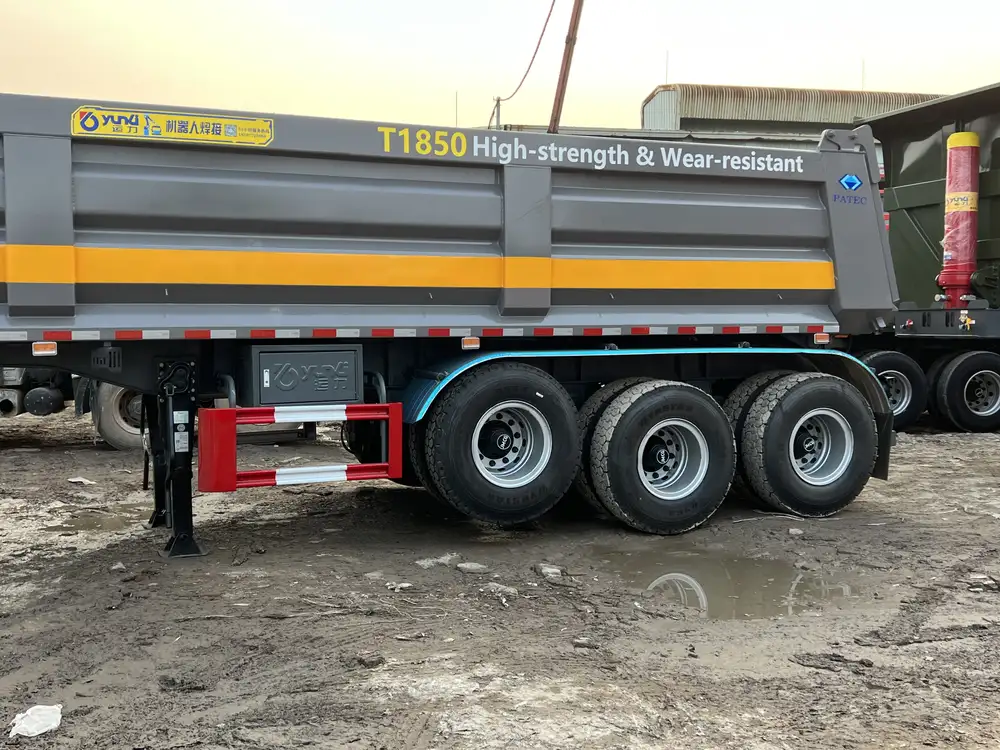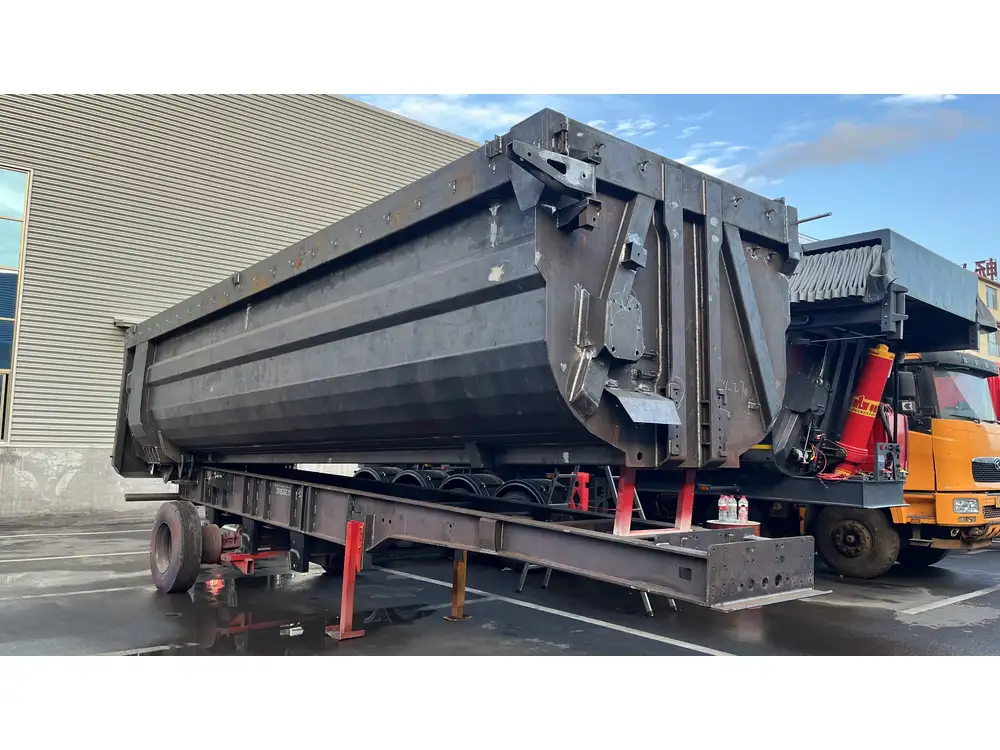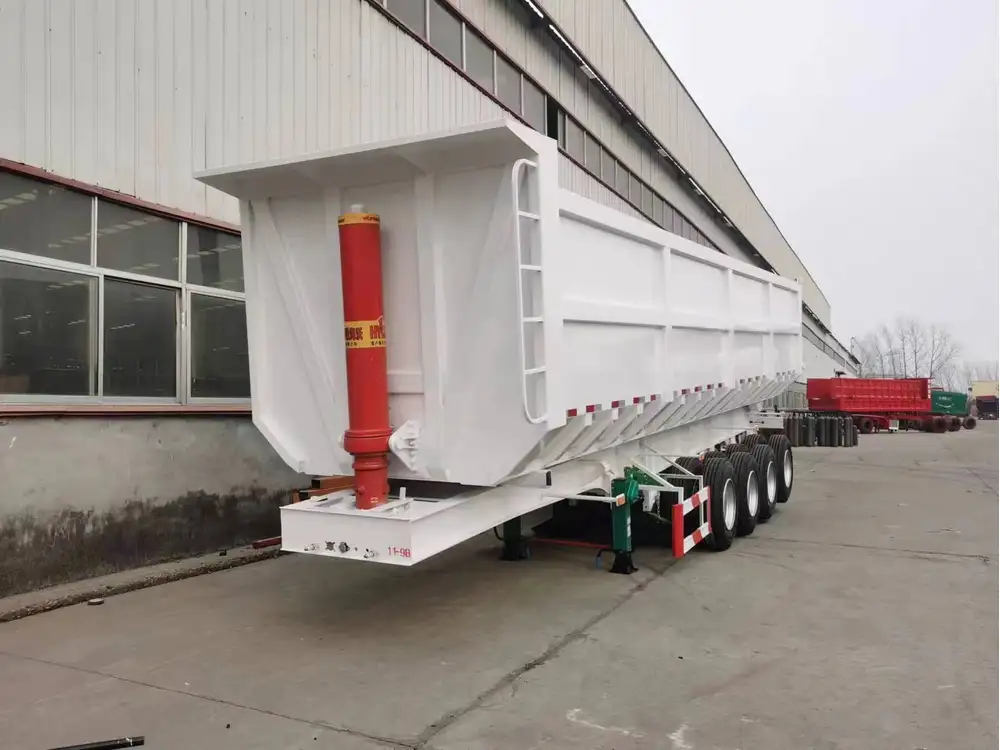Loading a semi truck trailer correctly is quintessential to maintaining safety on the roads, ensuring efficient transport, and maximizing fuel efficiency. An improper load can lead to a myriad of issues, including regulatory violations, reduced vehicle performance, and potential hazards during transit. In this comprehensive guide, we will delve into the intricacies of loading a semi truck trailer, highlighting essential techniques, weight distribution principles, and best practices that should be adopted by all drivers and logistics managers.
Understanding Load Limits
Gross Vehicle Weight Rating (GVWR)
The Gross Vehicle Weight Rating (GVWR) is the maximum weight a vehicle can safely carry, including its own weight and the weight of the cargo. It is crucial to understand the GVWR as it dictates the loading limits for your semi trailer. Exceeding this rating can compromise vehicle integrity and lead to penalties.
| Item | Weight (lbs) |
|---|---|
| Empty Semi Truck | 15,000 – 20,000 |
| Trailer | 5,000 – 10,000 |
| Cargo Weight Limit | Variable (may vary by truck and state) |
| Total GVWR | Up to 80,000 |

Payload Capacity
(payload capacity) is the difference between the GVWR and the weight of the truck and trailer when they are empty. Understanding this capacity helps in determining how much cargo can be safely loaded without exceeding limits.
| Metrics | Calculation Example |
|---|---|
| GVWR | 80,000 lbs |
| Empty Truck Weight | 20,000 lbs |
| Empty Trailer Weight | 10,000 lbs |
| Payload Capacity | 80,000 – (20,000 + 10,000) = 50,000 lbs |
The Science of Weight Distribution
Importance of Weight Balance
Proper weight distribution is integral to maintaining stability while driving. Uneven weight can lead to tire wear, blowouts, and even accidents. Managing weight distribution involves:
- Load Placement: Positioning heavier items low and towards the front of the trailer aids stability.
- Balancing Front and Rear: An optimal balance between the front and rear axles is essential; too much weight in the front can lead to steering issues, while too much in the rear can result in swaying and difficulty braking.

Senate Guidelines for Weight Distribution
| Axle Configuration | Percentage of Weight Distribution |
|---|---|
| Front Axle | 12-15% |
| Drive Axle | 45-50% |
| Trailer Axle | 35-40% |
Each vehicle has its own specifications and knowing these can enhance safety and performance.
Steps for Loading a Semi Trailer
Step 1: Plan Your Load

Evaluate Your Cargo
Before you even step into the loading zone, assess what you are transporting. Understanding the shape, weight, and size of cargo will help in planning:
- Material Handling: Can your cargo be loaded with forklifts, or does it require manual loading?
- Stacking Ability: Is it stackable, or do certain items need to remain protected from crushing?
Step 2: Position Your Trailer
- Park on Level Ground: Ensure the trailer is on level ground to facilitate easier loading.
- Chock the Tires: Use wheel chocks to prevent any movement during the loading process.
Step 3: Load Strategically

Follow the 60/40 Rule
The 60/40 rule suggests loading 60% of the cargo at the front and 40% at the rear. This ensures the center of gravity remains closer to the front axles, preserving stability.
Utilizing Palletization
Place items on pallets for easier movement and better weight distribution.
Step 4: Verify Weight with Scales
Post-loading, weigh your trailer to ensure compliance with weight regulations. Many truck stops offer the ability to weigh vehicles, which gives a clear indicator of whether you are within limits.

Step 5: Secure the Load
Ensuring your load is properly secured cannot be overemphasized, as a well-secured load prevents cargo from shifting during transit. Utilized methods include:
- Straps and Tie-downs: Utilize high-strength straps to tie down items.
- Tarps: In case of open trailers, tarps can safeguard against environmental factors.
Compliance with Regulations
Federal Motor Carrier Safety Administration (FMCSA)
Compliance with FMCSA regulations is crucial for any freight operation. The following must be adhered to:
- Documentation: Maintain records of weight, cargo types, and route plans.
- Vehicle Inspections: Regular inspections ensure that truck and trailer meet safety standards.

State-Specific Regulations
Different states may have unique laws regarding weight limits and loading practices. Always do your due diligence to research and comply with local regulations.
Common Mistakes to Avoid
Overloading
One of the most critical mistakes one can make is overloading the trailer, leading to potential financial penalties and safety hazards.

Poor Weight Distribution
Ineffective weight distribution compromises the vehicle’s balance, increasing the risk of accidents and mechanical failures.
Neglecting Load Security
Inadequate security of the cargo can lead to load shifts during transit, potentially resulting in injuries and damage.
Tools and Resources

Load Calculator Apps
Using load calculator applications can significantly streamline the loading process. These tools allow users to input cargo weights and dimensions, receiving real-time feedback about optimal loading practices.
| App Name | Features |
|---|---|
| LoadCalc | Simple interface for quick weight checks |
| Trucker Path | Calculates route and weight compliance |
| Fleetio | Comprehensive fleet management tool |
Weight Distribution Bar Charts
Implementing bar charts can visualize loading strategies. Below is an illustrative example of an optimal loading distribution.
| Section | Front 60% | Rear 40% |
|---|---|---|
| Cargo 1 | Heavy (15,000 lbs) | Moderate (10,000 lbs) |
| Cargo 2 | Moderate (8,000 lbs) | Light (5,000 lbs) |
Conclusion
Effective loading of a semi truck trailer is not merely a best practice—it’s a necessity that influences safety, regulatory compliance, and operational efficiency. By thoroughly understanding weight limits, employing sound loading strategies, and adhering to compliance regulations, drivers and logistics managers can significantly mitigate risks and enhance productivity. An informed approach leads to secure cargo transport, reduced costs, and valuable gains in the highly competitive transport industry.
By engaging with the strategies outlined in this guide, you position your transportation operation not just for compliance but for success in the freight industry landscape. Familiarity with these protocols not only prepares for current challenges but also anticipates future evolutions in transportation and logistics practices.



